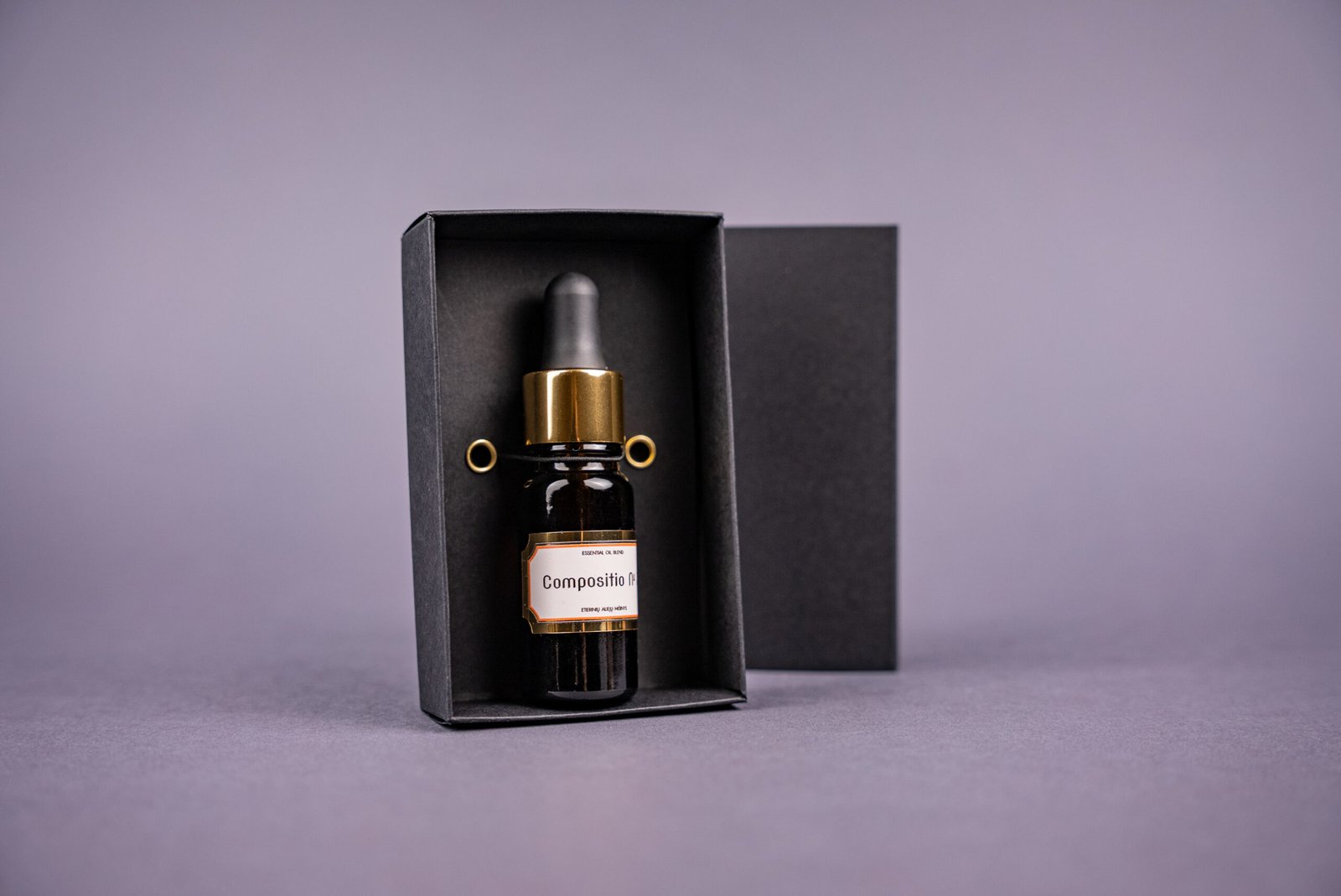
Essential oil
Compositio №1
10 ml
Body
Just love yourself. Relax and let your body enjoy the warmth of orange, eucalyptus, black pepper, chamomile and peppermint.
19€

Essential oil
10 ml
Body
Just love yourself. Relax and let your body enjoy the warmth of orange, eucalyptus, black pepper, chamomile and peppermint.
19€
A blend of natural essential oils of the highest quality and purity, created in collaboration with perfumers from the Provence region who have many years of expertise in botanical compositions. COSMOS ORGANIC has certified all the blend components with the ECOCERT GREENLIFE certificate of high standards. This means that the products use ingredients of the highest quality at strictly defined levels and that the quality of the materials has been proven by inspections by a competent certifying organisation. The raw materials for the ingredients must be grown, harvested and processed in accordance with very strict standards, and the manufacturing process and procedures used to produce the products must respect the environment, human health and well-being. The composition and proportions of the essential oils in this blend have been designed to bring feelings of peace, harmony and gratitude.
Do not add more than 6 drops of essential oil to a full bath. Before adding essential oils to the water, stir them into the bath salt, as essential oils do not dissolve in water and remain on the surface, which can irritate the skin. These essential oil blends are ideal for mixing with Oprassia Dry Mineral WaterTM, Euphrosyne or Deynove, which do not contain additional fragrances. For example, take two heaped tablespoons of Dry Mineral WaterTM, put 6 drops of the essential oil blend on top, mix and add to the bath. You can also make a hand or foot bath in the same way. You can add a few drops of the essential oil blend to a container of dried flowers, put it on a cotton napkin and put it in a cupboard or on a warm radiator. You can also use aromatherapy pebbles or medallions, which will slip unnoticed in the workplace or by the bedside and evaporate slowly, giving off a gentle aroma.
The culture of the Grand Duchy of Lithuania's manors combined folk and official medicine. The pharmacies contained dried medicinal herbs, lime blossoms, chamomile, mint, various roots, rose, lavender and other essential oils, and the fat of various animals for essential oil extractions. The medicine cabinet also contained melted 'March snow' used for beauty treatments, rose water, myrrh and frankincense for breathing in rooms. Essential oils (Oleum aetheric) are natural, volatile plant fragrances that are widely used in the perfumery, pharmaceuticals, the food industry and in aromatherapy preparations. In many languages, the same name 'oils' (Oleum) refers to vegetable fats and aromatic compounds, sometimes with the addition of the explanatory word 'volatile' or 'essential', e.g., in the case of the 'oils', 'oleum' and 'oleum'. In Latin: Oleum volatile, Oleum aethereum, in French: huile volatile, huile essentielle, also essence, in Russian: efirnoye maslo, letucheye maslo, in German: aetherishes Ol, Fluchtig Ol, in English: volatile oil, essential oil, in Italian: Olio essenziale, esenza. To call aromatic substances 'oils', even with the addition of the word 'volatile', is very misleading, since these oils have nothing in common with fatty oils, neither in chemical composition nor in plant physiology. Fats are esters of glycerol and fatty acids and essential oils are mixtures of volatile, aromatic compounds. Fatty oils are plant reserves, essential oils are volatile secretions. Essential oils are mixtures of many plant chemical compounds: hydrocarbons, alcohols, ketones, aldehydes, esters, ethers and other compounds with high viscosity. These are usually dominated by single substances that give the oil its 'character' and determine its properties such as odour and therapeutic effect, e.g. geraniol in rose oil, cinnamaldehyde in cinnamon oil, eugenol in carnation oil, thymol in thyme oil and citral in lemon oil. The integral fragrance of essential oils is also influenced by the other components. The quantity and quality of the components are determined by high-performance liquid chromatography. The essential oil extracted from a single plant may contain dozens of such components. The components that make up the bulk of the composition are characterised by a predominant odour note. Unscrupulous manufacturers sometimes copy the basic compounds of the components of natural essential oil, replace them with synthetic chemical industry-produced substitutes, dissolve them in a basic solvent and market them as natural essential oils. Such products can usually be distinguished by their low price. Essential oils are highly volatile liquids. They are usually colourless or pale yellow, rarely other colours, e.g. chamomile essential oil is azure and bergamot is greenish. Often essential oils from different species of the same plant differ greatly in chemical composition and smell, e.g. different Eucalyptus species can produce different essential oils: Eucalyptus globulus Lobillus contains cineole for the eucalyptus scent and Eucalyptus citriodora Hook contains citronellal for the lemon smell.
